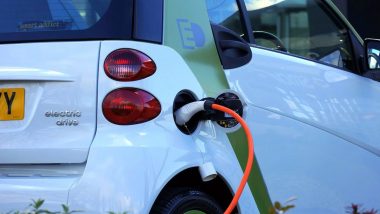Washington, May 11 (PTI) A staggering 93 per cent of the total H-4 visa holders in the US having work authorisation are from India, a latest Congressional report on the spouse visa has said.
Over one-fifth of the H-4 visa holders with work authorisation live in California, it said.
Ninety-three per cent of granted applications for employment authorisation were issued to women; seven per cent to men, according to the report on H-4 visas by the independent Congressional Research Service of the US Congress, which prepares periodic reports on issues of interest to US lawmakers.
"Ninety-three per cent of approved applications for H-4 employment authorisation were issued to individuals born in India, and five per cent were issued to individuals born in China. Individuals born in all other countries combined make up the remaining two per cent of approved applications," CRS said in its nine-page report.
As of December 25, 2017, US Citizenship and Immigration Services had approved 126,853 applications for employment authorisation for H-4 visa holders. These count all approvals since May 2015 when the rule was implemented.
This number includes 90,946 initial approvals, 35,219 renewals, and 688 replacements for lost cards.
H-4 visa holders are not geographically constrained by law, and approvals for employment authorisation documents have been issued to H-4 non-immigrants living in all 50 states, the District of Columbia, and the US territories.
California accounts for more than one-fifth (28,033), and Texas and New Jersey together account for another 20 per cent.
Before 2015, H-4 visa holders were not eligible for work authorisation.
As the visa queue increased for individuals in particular those from India and China awaiting employment-based legal permanent resident (LPR) status, policymakers and others raised concerns about the lack of employment authorisation for spouses hindering the US' ability to attract and retain highly educated workers.
In 2015 Federal Register issued a notice establishing work authorisation for certain H-4 spouses referred to three anticipated benefits: reducing personal and financial burdens on H-1B and H-4 non-immigrants, reducing disruption to the US businesses and attracting and retaining highly-skilled workers.
The previous Obama administration argued that allowing H-4 spouses to work would support the US economy because H-1B non-immigrants and their spouses have historically made significant contributions to entrepreneurship and research and development.
Finally, this rule may facilitate attracting and retaining highly skilled workers by bringing US immigration policies more in line with those of other countries that compete for similarly skilled workers, it said.
Unlike work authorisation for H-1B visa holders, employment authorisation that is granted based on H-4 status is not restricted to a specific employer and does not require the employer to get approval from the Department of Labour.
H-4 work authorisation also does not prohibit self-employment, starting a business, or hiring employees.
However, under its America First Policy, the Trump administration is proposing to remove from regulation H-4 spouses of H-1B non-immigrants as a class of foreign nationals eligible for employment authorisation.
The result would be that H-4 visa holders would not have authorisation to work in the US.
The administration anticipates publishing the proposed rule in the Federal Register in June 2018, which would be followed by a public comment period before a final rule would be published, CRS said.
While H-4 EADs have been issued to residents of almost 4,000 cities across the US, CRS said the cities with the highest numbers are around large "tech hubs" such as the Silicon Valley, northern New Jersey, Seattle, Dallas-Fort Worth, Houston, Austin, the Washington, DC, region and Atlanta.
CRS said Congress has considered several related pieces of legislation.
The Immigration Innovation Act of 2018 (S.2344), as introduced in the 115th Congress, would codify the current regulation providing work authorisation to H-4 spouses of certain H-1B non-immigrants and would require the employer of the H-4 spouse to attest that they will pay her or him the greater of the prevailing wage for that occupation in the area of employment or the actual wage paid to other workers in the same job with similar qualifications (i.e., applying the same pay standard to the hiring of H-4 visa holders as is applied to their H-1B spouses).
Previous versions of this bill (S.153, as introduced in the 114th Congress, and S.169, as introduced in the 113th Congress) would have provided employment authorisation to the spouse of any H-1B or L (intra-company transferee) non-immigrant, regardless of whether the H-1B or L non-immigrant had begun the process of obtaining LPR status.
These bills would not have required labour attestation.
Likewise, immigration reform bills in the 113th Congress (S.744, as passed by the Senate, and HR 15, as introduced) would have provided employment authorisation to the spouse of any H1B or L non-immigrant, regardless of whether the H-1B or L non-immigrant had begun the process of obtaining LPR status.
(This is an unedited and auto-generated story from Syndicated News feed, LatestLY Staff may not have modified or edited the content body)














 Quickly
Quickly



















